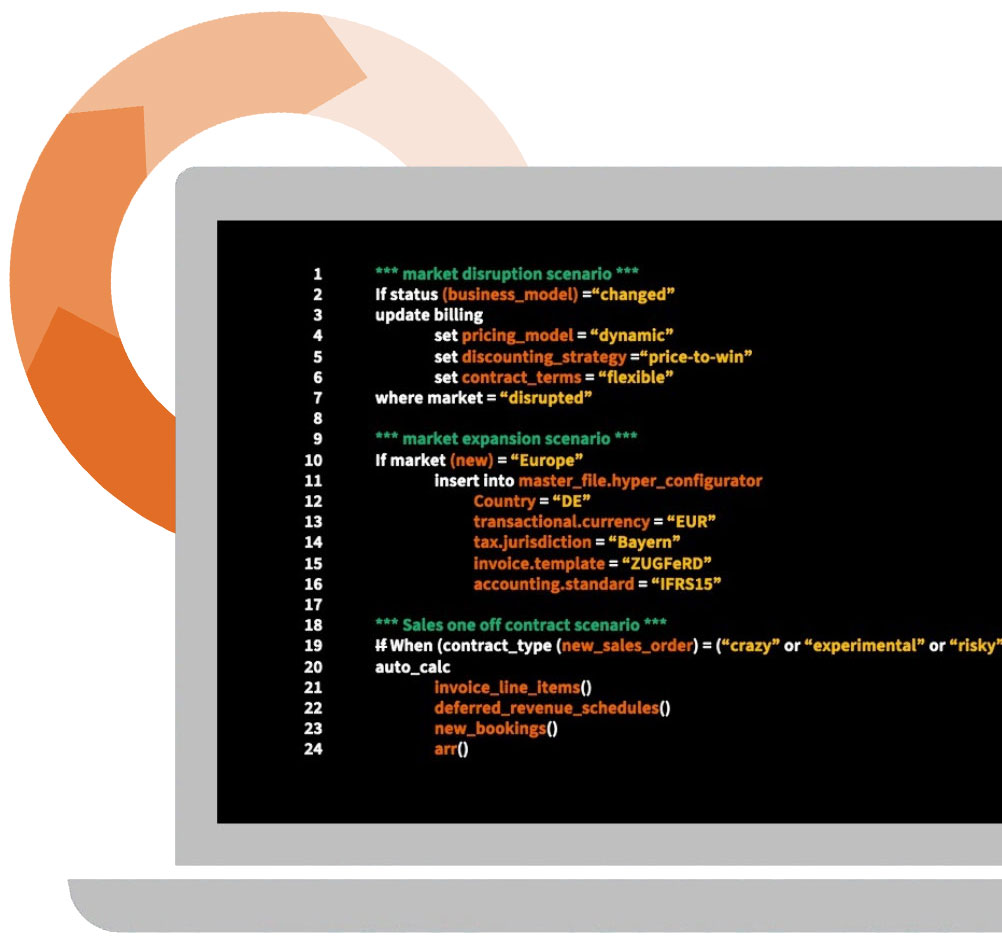The finance platform for innovative business models
The Ordway origin story
Back from the future to fix your billing
In the year 2030… a group of venture capitalists conducted a study on the historical performance of their portfolio companies. One of the major findings was that the companies could have grown 20% faster if entrepreneurs had been able to execute more innovative pricing and contract strategies. A root cause analysis identified that inflexible billing systems were the key inhibitor that had been constraining growth.
So the VCs assembled a team of financial software experts — ones who had designed and launched some of the biggest, multi-billion dollar products in the ERP space. And they sent this group back in time to the year 2018 on a mission to build a new kind of billing system. The new system that would be flexible enough to support any pricing strategy or contract model entrepreneurs could dream up.
And that is how Ordway was born.

The Rev-o-lution in Rev-a-new
As-a-service is fundamentally changing the nature of revenue
Throughout the 1900s, most goods and services were purchased “as-a-product” with one-time transactions. But in the first few decades of the new millennium, there has been a big shift towards recurring revenue models. Things we used to buy “as-a-product” we now buy “as-a-service” sometimes in longer term contracts like subscriptions and sometimes only, as needed, “on demand.”
The big shift started in categories like movies, music, and software, but quickly spread to every industry. Today you can find a subscription for almost every category of consumer products – even underwear. And businesses can purchase almost any type of SKU as-a-service – even compressed air.
This transition to as-a-service has brought with it some fundamental changes to the nature of revenue. Revenue used to be transactional, one-time, and recognized immediately on the income statement. But today revenue is contractual, recurring, and deferred on the balance sheet – sometimes for multiple years in advance until performance obligations are satisfied.
275B
The value of recurring revenue generated from the Subscription Market Economy according to a recent study from Juniper Research.
514B
The combined market valuation of the top 100 private cloud companies according to the most recent ranking of the Forbes Cloud 100.
New accounting standards (ASC 606) were introduced in 2014, completely overhauling the way that businesses recognize recurring revenue. One of the biggest accounting changes in history, the new standards were so dramatic that many CPAs refer to it as “New GAAP.”
The Priceberg Effect
As-a-service companies have to support trillions of billing and accounting parameters
New as-a-service business models have also unleashed an explosion in “commercial innovation.” In today’s market, businesses compete not just on product features and customer experience, but on flexibility in pricing models and contract structures as well. Consider some of the innovations that have now become mainstream:
Customer acquisition models
- Free/Paid trial
- Freemium
- Ramp up pricing
- Pay-as-you-go
Pricing models
- Subscription
- Usage-Based
- Percentage
- Dynamic
Contract structures
- Annual subscriptions
- Prepaid usage with drawdowns
- Monthly minimums
- Spend commits with true ups
Expansion strategies
- Subscription add ons
- Usage caps and overage fees
- Pre-scheduled price increases
Chief Revenue Officers need all of these weapons in their war chest to be competitive in today’s marketplace.
While these different pricing and contract instruments provide sales with the firepower they need to win big deals, they also create a lot of complexity downstream for finance organizations.
The average $50M as-a-Service company has to support over a trillion different combinations of pricing models, payment schedules, billing and accounting parameters to be competitive in the market. We call this the “priceberg” effect and even finance platforms developed ten years ago are struggling to support all of these different permutations.
14Trillion
The number of billing permutations that a $25M SaaS/cloud company has to support in order to maintain competitiveness in today’s market.
740 Pages
The number of pages in KPMG’s most recent accounting guide that explains how to recognize revenue for software and SaaS applications.
Billing software has failed the finance and accounting organization
There are more custom billing applications than any other type of software
There is a significant gap between the “commercial innovation” sales teams need and the product features of the software applications finance teams use. Billing systems have become the Achilles heel for innovation, often blocking entrepreneurs and innovators from implementing the pricing and contract models they want to launch.
CFOs are put in the impossible position of either having to 1) say “no” to the creative deal structures needed to win big deals or 2) having hiring a small army of accountants to perform all the calculations in supersized spreadsheets. More and more innovative companies are choosing option #3 – building their own billing systems, which consumes in-house product development resources.
7.6B
The number of lines of code produced annually by software engineers who are developing their own, in-house billing systems.
5.2M
The number of overtime hours finance teams work each year to perform billing and accounting calculations in spreadsheets – outside of their systems.
Future-proofed by design
The first billing system with code written in future tense
Most billing and revenue systems are designed for how business was done in the past. Their features are based upon how pricing and contracts have worked in the 2000s and 2010s. Product development teams at billing vendors wait until pricing models go mainstream before adding it to their roadmap and feature list. The problem with this approach is that entrepreneurs don’t want to be mainstream. They want to be the early adopters. They want to be on the front edge of the bell curve. That’s where Ordway comes in.
Ordway wasn’t designed for how business was done in the past, but for how it is done today and how it will be done in the future. Ordway supports all of today’s innovative pricing strategies and contract structures. It also has the flexibility to adapt to new, emerging business models that haven’t been invented yet. With Ordway you feel confident that you can support whatever creative deal structures your sales team negotiates and respond to whatever new pricing trends emerge in the market.

Growing the World’s Population of Unicorns
Enabling finance organizations to scale their top line revenue
One of our aspirations is to grow the world’s population of unicorns. Greek mythology tells tales of these magical creatures roaming the forests and gliding across the sky thousands of years ago. For several millennia most of the world assumed that unicorns were extinct, but they have re-emerged over the past few decades. Today they number in the low 1000s, primarily inhabiting North America, but still far short of what their numbers could and should be.
Armed with the flexibility and automation of Ordway, finance organizations gain the scale they need to become unicorns. Billing and revenue operations can scale exponentially as the customer base and product catalog continues to grow. Finance leaders evolve into more than just CFOs. They become uniquestrians, taking the reins of the business to guide it on the best path forward.
Let’s Scale Your Top Line
Automate your revenue
Whether you are a $100M centicorn with big dreams or a $10B decacorn with growing pains, we’d love to discuss how we can help scale your top line with the power of billing and revenue automation.


